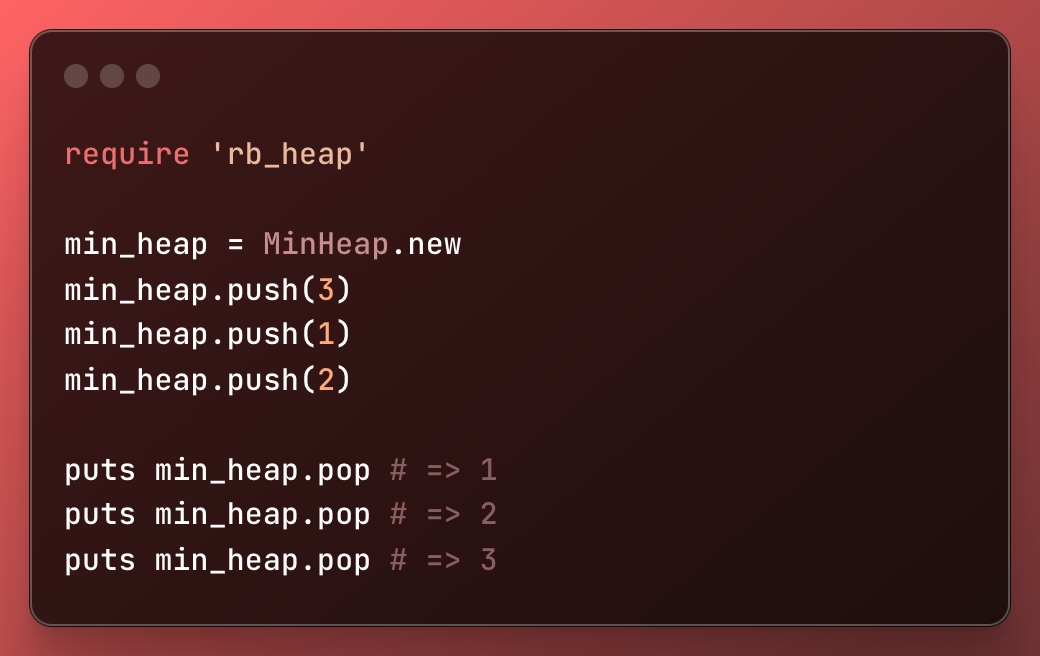Working with Heaps in Ruby
Efficiently Managing Data in Ruby With Advanced Data Structures
Heaps are a specialized tree-based data structure that satisfies the heap property: if P is a parent node of C, then the key (the value) of P is either greater than or equal to (in a max heap) or less than or equal to (in a min heap) the key of C. The node at the “top” of the heap (with no parents) is called the root node. Heaps are particularly useful for priority queues, where you want quick access to the element with the highest (or lowest) priority, and for algorithms like heap sort, which sorts elements by taking advantage of the heap properties.
Ruby does not include a built-in heap class, but we can easily use arrays to implement heaps or leverage the rb_heap gem for a more straightforward approach. This article will guide you through understanding heaps, their implementation, and usage in Ruby, with a focus on binary heaps for their simplicity and efficiency.
Understanding Heaps
Heaps can be visualized as nearly complete binary trees, which are perfectly balanced except for the last level, which is filled from left to right. There are two types of heaps:
Max Heap: Where every parent node is greater than or equal to its child nodes. The maximum element is at the root.
Min Heap: Where every parent node is less than or equal to its child nodes. The minimum element is at the root.
Why Use Heaps?
Efficiency: Heaps provide O(log n) insertion and deletion, making them highly efficient for priority queue implementation and algorithms that require frequent insertion and deletion of the highest or lowest element.
Simplicity: Heaps can be easily implemented using arrays, leveraging their structure to navigate parent-child relationships.
Implementing a Min Heap in Ruby
Here’s a basic implementation of a min heap in Ruby using an array:
How It Works:
Pushing an Element: When a new element is added, it’s placed at the end of the array (the bottom of the heap). Then, a “sift up” operation ensures the heap property by moving the new element up the tree until it’s in the correct position.
Popping the Root Element: To remove the root element (the minimum), the last element is moved to the root, and a “sift down” operation restores the heap property by moving this element down the tree until the heap is valid again.
Implementing a Max Heap in Ruby
Here’s the MaxHeap implementation code:
Using therb_heap Gem
For a more convenient approach, the rb_heap gem provides a ready-to-use min and max heap implementation. To use it, simply install the gem and follow the documentation for methods like push, pop, and peek.

https://github.com/florian/rb_heap

Conclusion
Heaps are a powerful and efficient data structure for managing prioritized data and can be implemented and used in Ruby with ease. Whether you choose to implement a heap from scratch or use a library like rb_heap, understanding heaps will significantly enhance your ability to solve problems that involve sorting, prioritization, and repetitive access to minimum or maximum elements.
